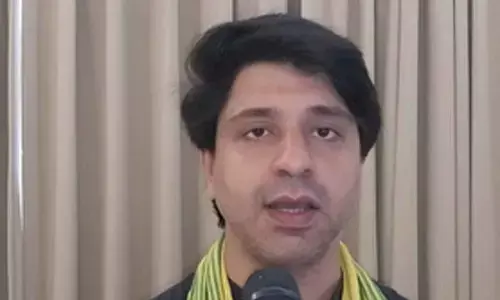What is hydrogen bomb?

North Korea has announced it successfully tested a miniaturised hydrogen nuclear device on Wednesday, setting off alarm bells in Japan and South Korea.
North Korea has announced it successfully tested a miniaturised hydrogen nuclear device on Wednesday, setting off alarm bells in Japan and South Korea. "Let the world look up to the strong, self-reliant nuclear-armed state," Kim Jong Un wrote in what North Korean state TV displayed as a handwritten note.
China said on Wednesday it will lodge a protest with North Korea. South Korea said on Wednesday it would take all possible measures, including possible United Nations sanctions, to ensure Pyongyang pays the price after its fourth nuclear test. The United States dropped atomic bombs on Japanese cities Hiroshima and Nagasaki in 1945 to end the World War II. More than 200,000 people perished in the bombings.
A hydrogen bomb made with uranium ups the ante many fold. Atomic bombs use a process called fission. They split plutonium into smaller atoms, releasing massive amounts of energy. Hydrogen bombs use fusion. Instead of splitting big atoms, it combines small atoms, like hydrogen to release a much bigger nuclear punch – hundreds of times more powerful.
A hydrogen bomb is a complex bit of machinery. It's basically two bombs in one. While it gets its bang from fusion, it takes a lot of heat to get the process started – to get the atoms to smash together and start a nuclear chain reaction. That's why they're called thermonuclear weapons. What better to do that with than another much smaller nuclear weapon. An atomic bomb works as the trigger to set off the hydrogen bomb. The two explosions are almost simultaneous, reports CNN.
The nuclear arsenals of the United States, Russia, United Kingdom, France and China are made up of these types of weapons. India and Pakistan are believed to have atomic bombs. Hydrogen bombs had never been used till North Korea made the disclosure, adds CNN. The energy released in a Hydrogen bomb is several magnitudes higher than an Atom bomb. Hydrogen bombs can devastate whole cities in one explosion.
A Hydrogen bomb derives its energy through the fusion of atoms. An Atom bomb derives its energy from fission. Nuclear fusion and nuclear fission are different types of reactions that release energy. In fission, an atom is split into two or more smaller, lighter atoms. It is easier to make Hydrogen bombs in small size, so it is easier to place them in missiles, says an NDTV report.
Woman injured in stabbing attack in Tokyo, suspect at large
Bengal cop booked for murder over mysterious death of woman home guard, SIT to probe case
Staffer recalls horror of 7-kg gold robbery by armed gang in Karnataka’s Hunsur
25-Year-Old Airline Cabin Crew Member Dies At Gurugram Party; Police Begin Investigation

















